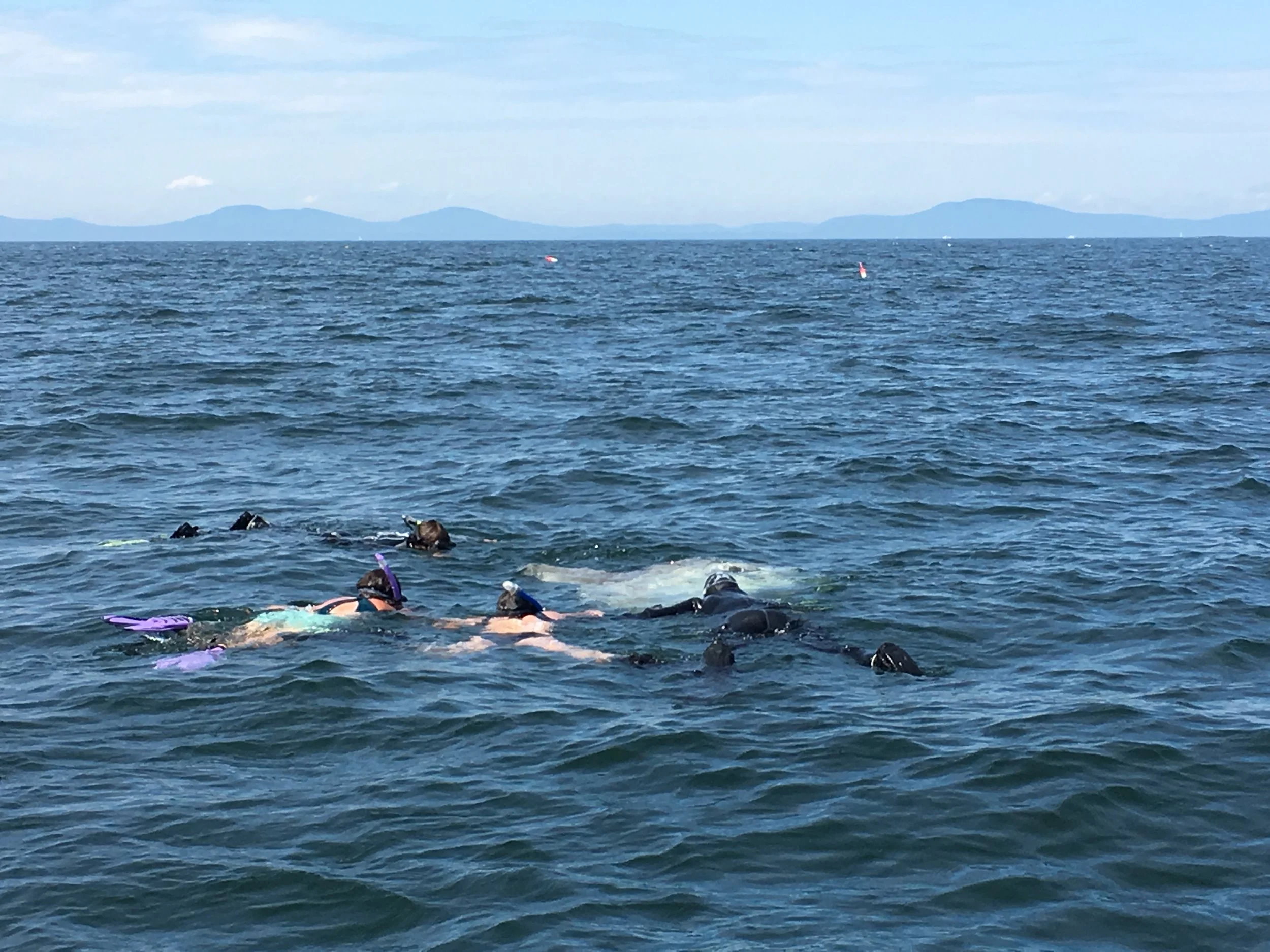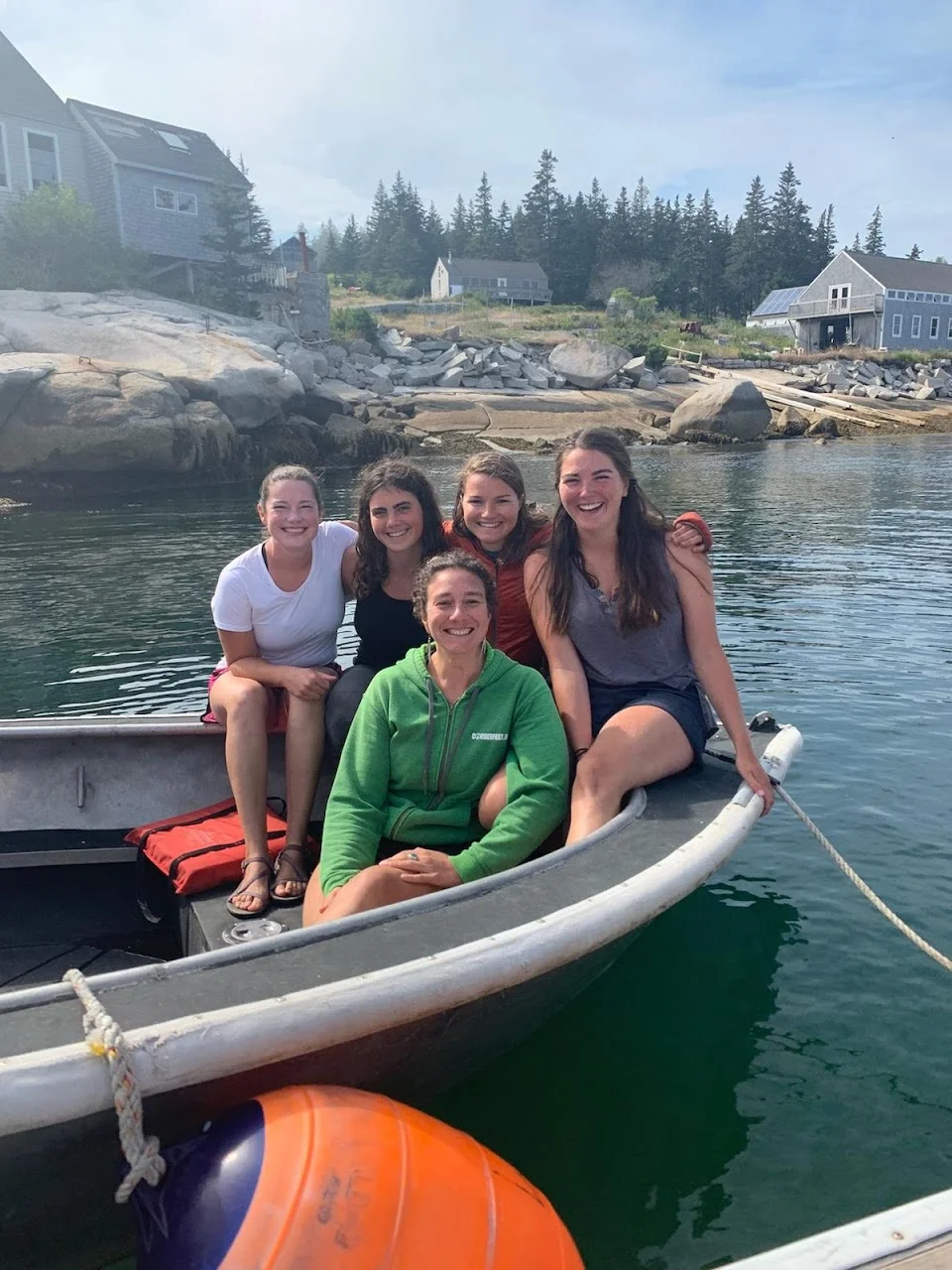Written by Madison Maier, Aquaculture Manager
Madison underwater! Photo by Carl Huntsberger
Even though I work on a scallop farm, I don’t get scallop dinners any night I want them. After all, you can’t eat your research project!
GSI, or gonadosomatic index, is the ratio of gonad mass to total body mass (Langton et al. 1987). I find out what these masses are by shucking a scallop, then weighing everything but the shell and then weighing just the scallop’s reproductive organ, the gonad. For our scallops (P. magellanicus), GSI are a proven way to determine when spawning happens. Their gonad is self-contained and the follicles are retained after spawning; so the majority of weight differences before and after spawning can be attributed to the presence or expulsion of gametes (Langton et al. 1987). So, if we take GSIs every week, we can see as the gonad becomes a bigger proportion of the scallop’s total body weight. After they spawn, and release their eggs and sperm, the gonad becomes a much smaller proportion. In order to see this difference, regular sampling is required!
Research team descending to collect wild scallops.
Each week, we conduct GSIs on 45 scallops from our farm, 25 scallops from farms in North Haven and Stonington, and have a special license from the DMR to take wild scallops as well! Most of the farmed scallops are being grown in lantern nets 10-30 feet below the surface of the water. On our farm we’re also growing scallops in bottom cages, so we can actually compare this between gear types, and we collect wild scallops at depths between 30-80 feet while scuba diving. With all of this data, we can compare spawning times of farmed and wild scallops as well as spawning times of scallops at different sites within the Penobscot Bay.
So, stay tuned as we collect more data over the summer to help us understand this important process on farms and in the wild scallop population!
GSI prep! All of these scallops are waiting to be weighed. Female scallops have an orange/red gonad, while male scallops have a white gonad.














